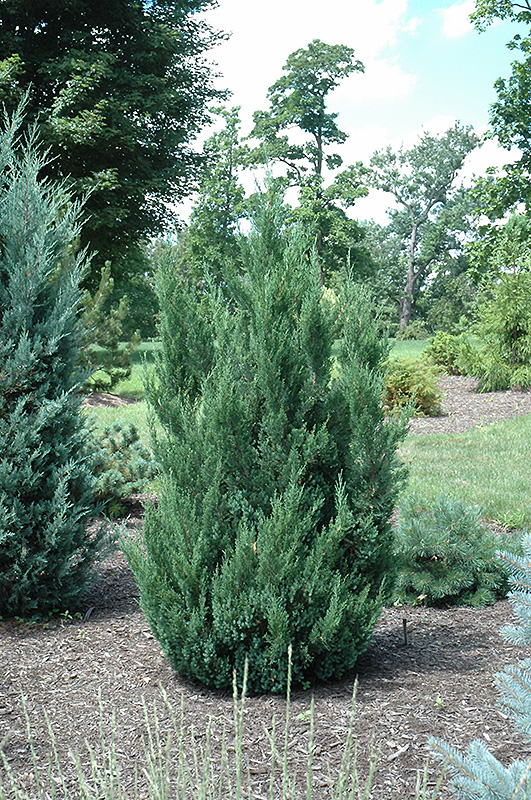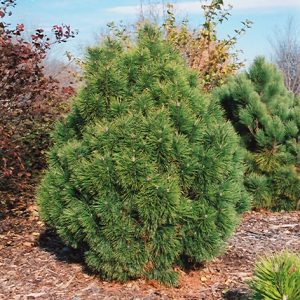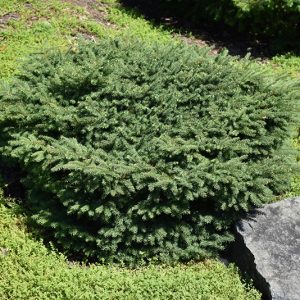Description
Growth & Care
| USDA Plant Hardiness Zone | 4a |
| Growth Rate | Slow |
| Recommended Pruning Method | Late Winter Pruning |
Foliage
| Foliage Type | Evergreen |
| Plant Form | Pyramidal |
Flowers
| Flower Fragrance | Unscented |
Additional Categories
| Additional Category | Juniper |
| Landscape Application | Accent, Articulation, Screening, Garden |
Details
Planting & Growing
Blue Point Juniper will grow to be about 12 feet tall at maturity, with a spread of 9 feet. It tends to fill out right to the ground and therefore doesn't necessarily require facer plants in front, and is suitable for planting under power lines. It grows at a slow rate, and under ideal conditions can be expected to live for approximately 30 years.
This shrub should only be grown in full sunlight. It is very adaptable to both dry and moist growing conditions, but will not tolerate any standing water. It is not particular as to soil type or pH. It is highly tolerant of urban pollution and will even thrive in inner city environments. This is a selected variety of a species not originally from North America.
Landscape Attributes
Blue Point Juniper is a dense multi-stemmed evergreen shrub with a distinctive and refined pyramidal form. It lends an extremely fine and delicate texture to the landscape composition which can make it a great accent feature on this basis alone.
This is a relatively low maintenance shrub, and is best pruned in late winter once the threat of extreme cold has passed. Deer don't particularly care for this plant and will usually leave it alone in favor of tastier treats. It has no significant negative characteristics.
Blue Point Juniper is recommended for the following landscape applications:
Accent, Vertical Accent, Hedges/Screening, General Garden Use
Ornamental Features
Blue Point Juniper is a dwarf conifer which is primarily valued in the landscape or garden for its distinctively pyramidal habit of growth. It has attractive bluish-green evergreen foliage. The scale-like sprays of foliage are highly ornamental and remain bluish-green throughout the winter. It produces powder blue berries from late spring to late winter.






